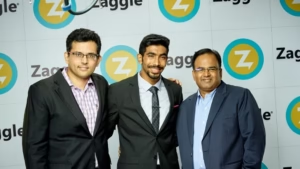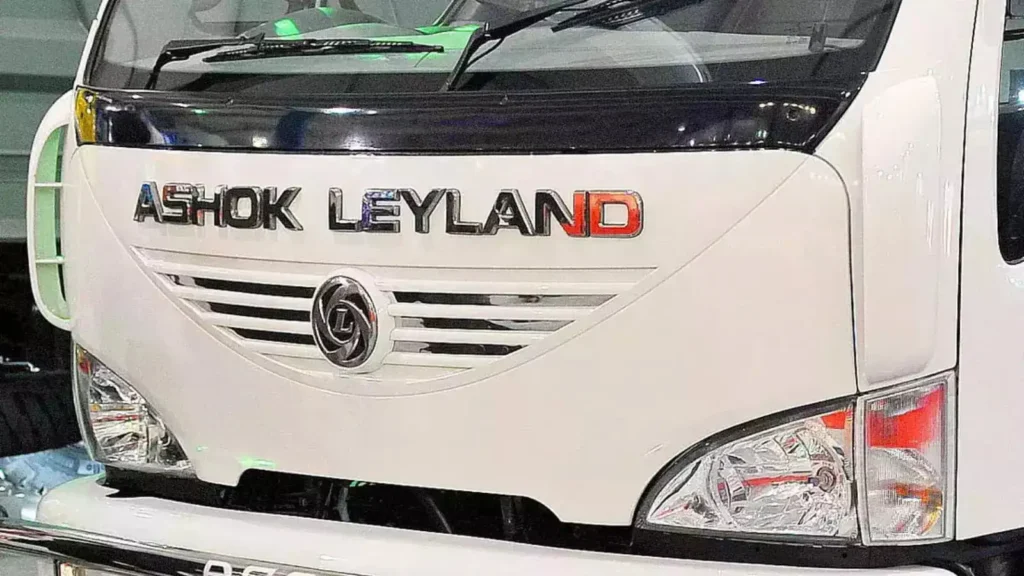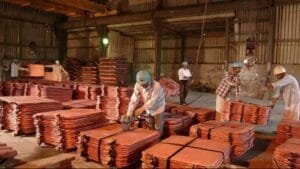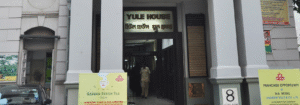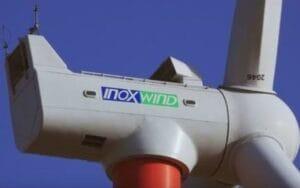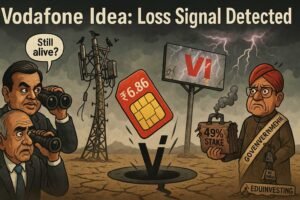1. At a Glance (100 words)
Ashok Leyland – the heavyweight champion of “India’s truck wars” – just delivered a record Q1 FY26.Revenue? ₹8,725 Cr. EBITDA? ₹970 Cr. PAT? ₹594 Cr.That’s not just driving growth, that’s overtaking it with headlights flashing.With 31% market share in M&HCVs and buses, and a presence in 50 countries, they’re not just selling vehicles – they’re selling horsepower with attitude.Add in a 2.56% dividend yield, some juicy EV ambitions, and the fact that promoters still have 41% pledged (because drama is necessary), and you’ve got yourself one of India’s most talked-about auto stories.
2. Introduction (300 words)
If the Indian economy were a road, Ashok Leyland would be that loud, turbo-charged truck in your rear-view mirror – impossible to ignore, slightly intimidating, but crucial for carrying half the nation’s goods.
Born in 1948, matured under the Hinduja Group, and now India’s second-largest commercial vehicle manufacturer, the company knows the CV market like an old dhaba owner knows his chai customers. They’ve survived economic slowdowns, BS emission norms, fuel price tantrums, and even competition from Tata Motors – the Tata Safari of CVs – and still kept their engines roaring.
The FY24–FY25 journey has been a blend of road trips and racetracks:
- Truck sales up59% in two years.
- Bus segment revival like a Bollywood comeback (almost 6x jump in two years).
- EV arm Switch Mobility quietly plotting to electrify not just buses but heavy trucks.
The Q1 FY26 numbers confirm they’re not idling:YoY PAT growth of ~7.7%, strong margins, and market share gains. The only “speed breaker” is debt – nearly ₹50,000 Cr in borrowings – which means interest costs alone could finance a small country’s transport ministry.
And yet, in the great race of India’s infrastructure boom, Ashok Leyland is right in the fast lane. The question for investors isn’t “Will they grow?” – it’s “Will they grow faster than their debt meter?”
3. Business Model (WTF Do They Even Do?) (300 words)
Ashok Leyland’s business is as vertically integrated as a double-decker bus.
Primary revenue driver:
- Commercial Vehicles (89% FY24)– The big guns: trucks, buses, and LCVs. They serve goods carriers, passenger buses, construction haulers, and the defence sector. Price range? ₹15–₹40 lakh+ per vehicle.
Other gear:
- Financial Services (11%)– Vehicle and housing finance through Hinduja Leyland Finance. A steady cash churner but small compared to the CV business.
FY24 Product Mix:
- Trucks: 60% revenue – 96,995 units sold.
- Buses: 12% revenue – 17,956 units sold.
- LCVs: 12%
- revenue – 66,633 units sold.
- Power Solutions, Defence, Aftermarket: 16% combined.
Why it works:
- Scale:8 manufacturing plants in India, plus UAE & UK bus plants.
- Distribution muscle:943 touchpoints, 1,000+ service bays.
- Diversification:From CNG-powered Bada Dost to electric buses under Switch Mobility.
Why it can stall:
- Cyclicality:CV sales are tied to GDP and infra spends. Bad economy = bad sales.
- Debt:High leverage means interest eats margins in bad cycles.
- Competition:Tata Motors is always in the rear-view mirror.
In short: They make the trucks, finance the trucks, service the trucks, and now want to electrify the trucks. The only thing left is selling the dhaba tea to the drivers – maybe FY27?
4. Financials Overview
Quarterly YoY/QoQ Table (₹ Cr)
| Metric | Latest Qtr (Jun’25) | YoY Qtr (Jun’24) | Prev Qtr (Mar’25) | YoY % | QoQ % |
|---|---|---|---|---|---|
| Revenue | 8,725 | 8,299 | 14,696 | 5.1% | -40.6% |
| EBITDA | 970 | 1,020* | 2,991 | -4.9% | -67.6% |
| PAT | 594 | 551 | 1,246 | 7.8% | -52.3% |
| EPS (₹) | 0.87 | 0.83 | 1.92 | 4.8% | -54.7% |
*Jun’24 EBITDA back-calculated from OPM% and revenue.
Commentary:
- YoY: Slight revenue bump, but PAT up thanks to controlled costs.
- QoQ: Big drop – seasonality and post-year-end slowdown in CV sales.
- Margins: Still healthy at ~11% EBITDA in a traditionally low-margin industry.
5. Valuation (Fair Value RANGE only)
Method 1: P/ETTM EPS = ₹5.46Industry avg P/E = ~20x (commercial vehicles mid-cap)FV Range = ₹109–₹136
Method 2: EV/EBITDATTM EBITDA = ₹9,540 CrNet Debt = ₹49,962 Cr – Cash ~ negligible = ~₹50,000 CrEV/EBITDA fair range = 7x–9x → EV ₹66,780–₹85,860 Cr → Equity FV




